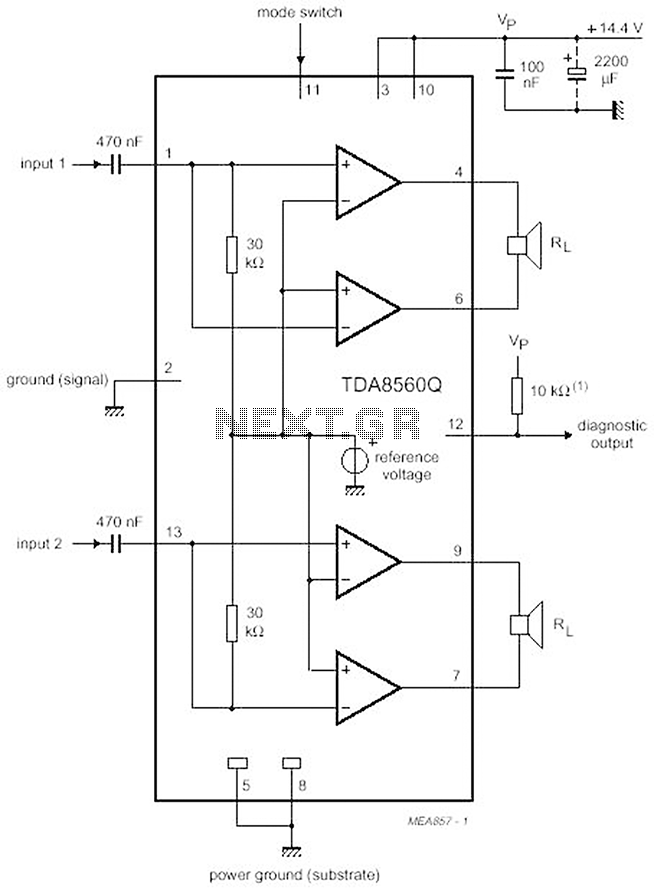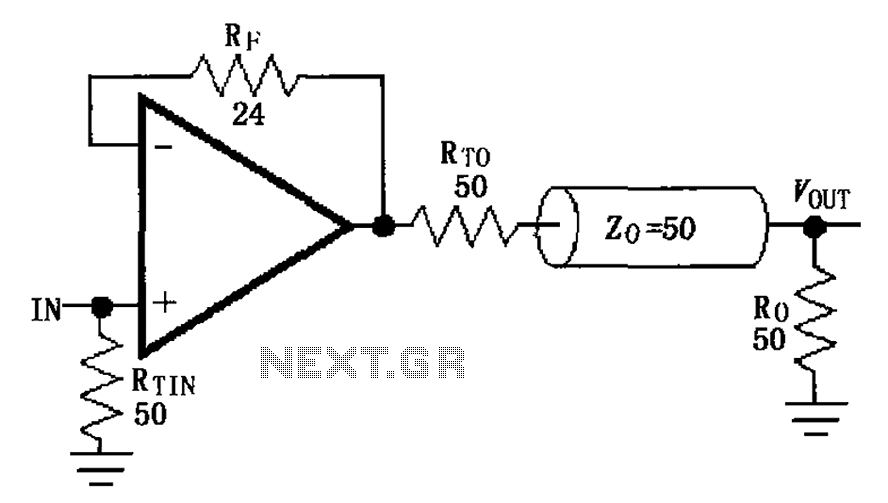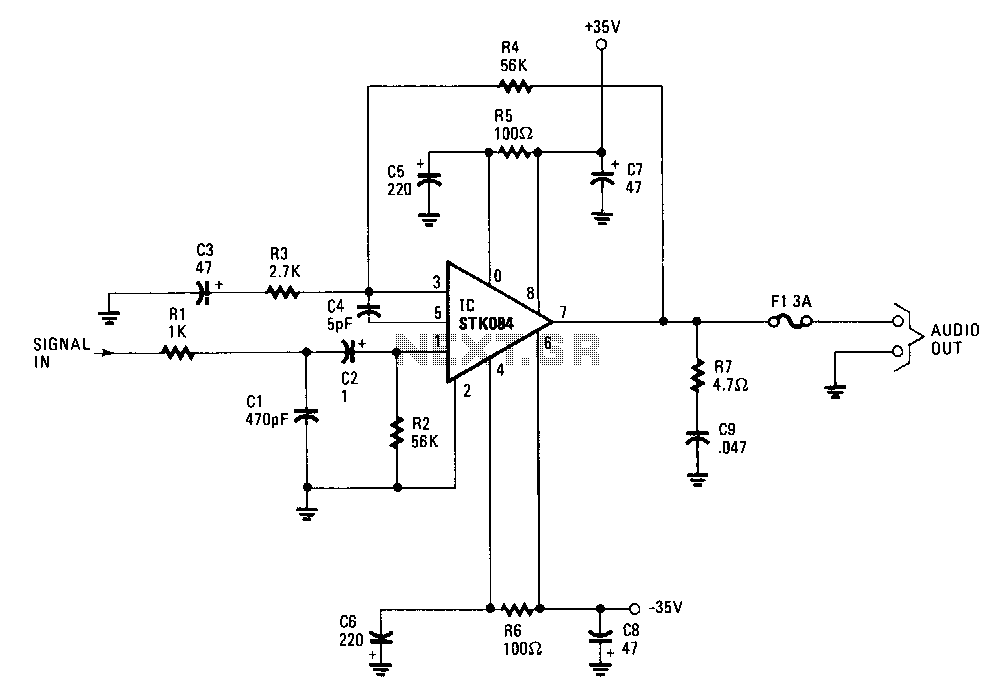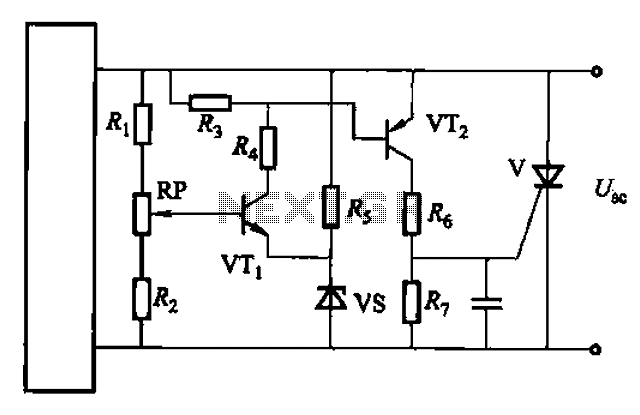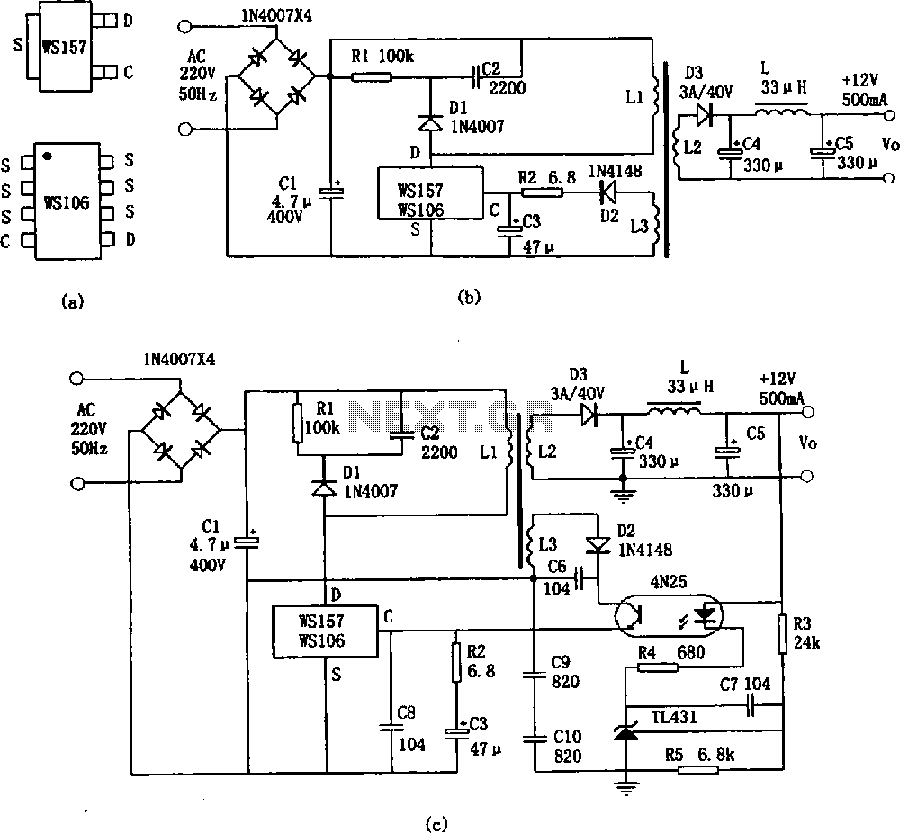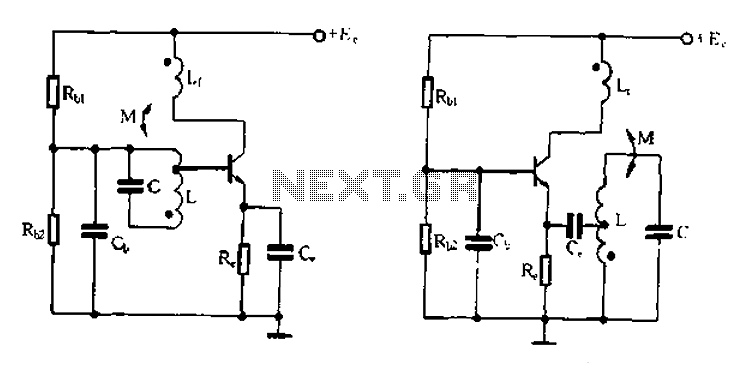
Simple Radio Circuit using Op Amp
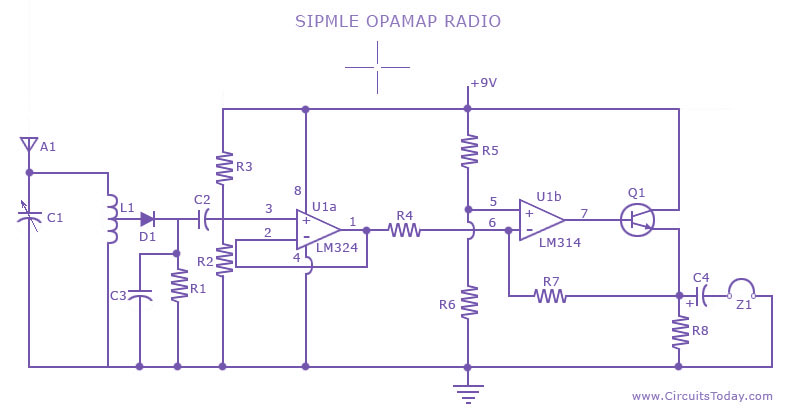
A low-cost, simple radio circuit schematic using an operational amplifier. This radio circuit diagram consists of a sensitive audio amplifier that receives strong signals.
The presented radio circuit schematic utilizes an operational amplifier (op-amp) to create a cost-effective and straightforward radio receiver. The core functionality of the circuit revolves around the op-amp, which serves as a sensitive audio amplifier, capable of amplifying incoming radio frequency (RF) signals.
The circuit typically includes several key components: the op-amp itself, resistors, capacitors, and possibly an inductor or transformer for tuning purposes. The input stage of the circuit is designed to capture RF signals from an antenna. The antenna can be a simple wire or a more sophisticated design, depending on the required range and sensitivity.
In the circuit, the op-amp is configured in a non-inverting amplifier configuration, which allows for high input impedance and low output impedance, making it ideal for signal amplification. The gain of the amplifier can be adjusted by changing the feedback resistor values, which allows for flexibility in handling varying signal strengths.
Capacitors are used in the circuit to filter out unwanted frequencies and noise, ensuring that only the desired audio frequency signals are amplified. Additionally, a tuning circuit may be incorporated using an inductor and variable capacitor to allow the user to select specific radio stations by adjusting the resonant frequency of the circuit.
Overall, this low-cost radio circuit schematic is an excellent project for beginners in electronics, providing hands-on experience with op-amps and basic radio technology while demonstrating fundamental principles of signal amplification and tuning.A low cost,simple radio circuit schematic using op amp.This radio circuit diagram consists of a sensitive audio amplifier which receives strong signals.. 🔗 External reference
The presented radio circuit schematic utilizes an operational amplifier (op-amp) to create a cost-effective and straightforward radio receiver. The core functionality of the circuit revolves around the op-amp, which serves as a sensitive audio amplifier, capable of amplifying incoming radio frequency (RF) signals.
The circuit typically includes several key components: the op-amp itself, resistors, capacitors, and possibly an inductor or transformer for tuning purposes. The input stage of the circuit is designed to capture RF signals from an antenna. The antenna can be a simple wire or a more sophisticated design, depending on the required range and sensitivity.
In the circuit, the op-amp is configured in a non-inverting amplifier configuration, which allows for high input impedance and low output impedance, making it ideal for signal amplification. The gain of the amplifier can be adjusted by changing the feedback resistor values, which allows for flexibility in handling varying signal strengths.
Capacitors are used in the circuit to filter out unwanted frequencies and noise, ensuring that only the desired audio frequency signals are amplified. Additionally, a tuning circuit may be incorporated using an inductor and variable capacitor to allow the user to select specific radio stations by adjusting the resonant frequency of the circuit.
Overall, this low-cost radio circuit schematic is an excellent project for beginners in electronics, providing hands-on experience with op-amps and basic radio technology while demonstrating fundamental principles of signal amplification and tuning.A low cost,simple radio circuit schematic using op amp.This radio circuit diagram consists of a sensitive audio amplifier which receives strong signals.. 🔗 External reference
Warning: include(partials/cookie-banner.php): Failed to open stream: Permission denied in /var/www/html/nextgr/view-circuit.php on line 713
Warning: include(): Failed opening 'partials/cookie-banner.php' for inclusion (include_path='.:/usr/share/php') in /var/www/html/nextgr/view-circuit.php on line 713
